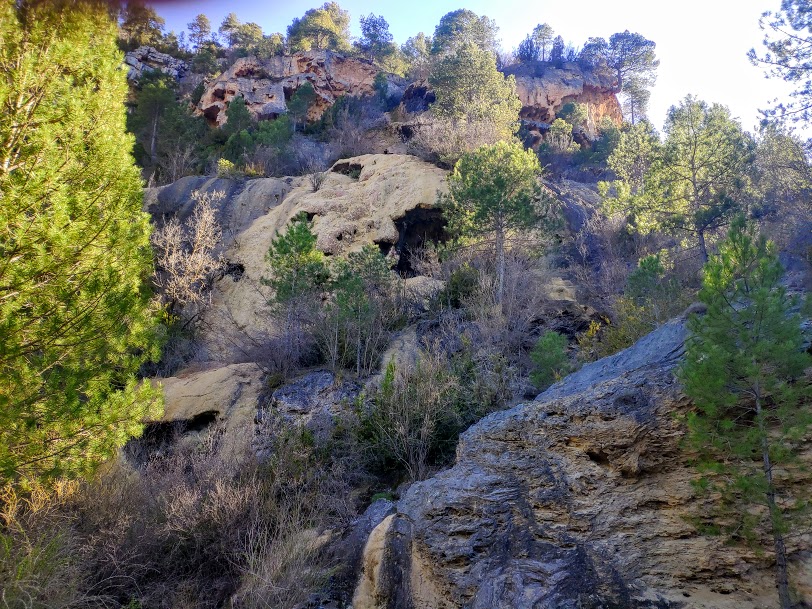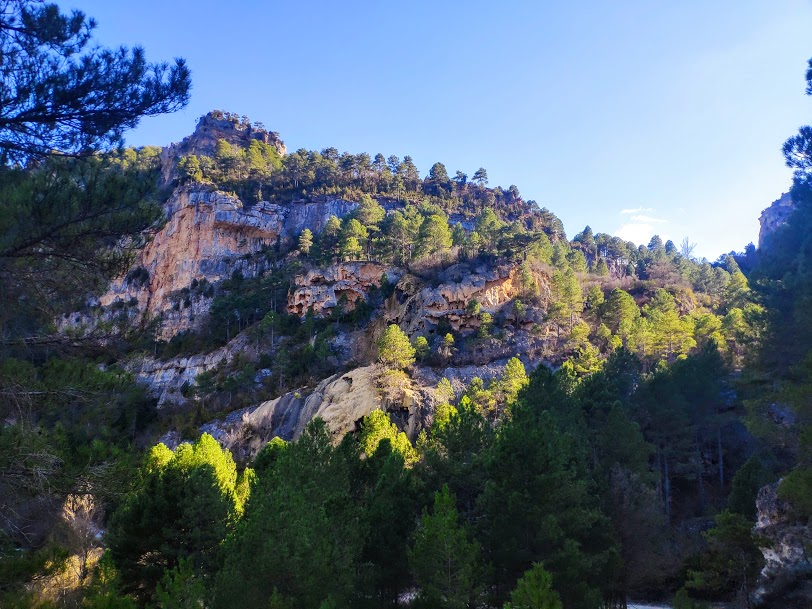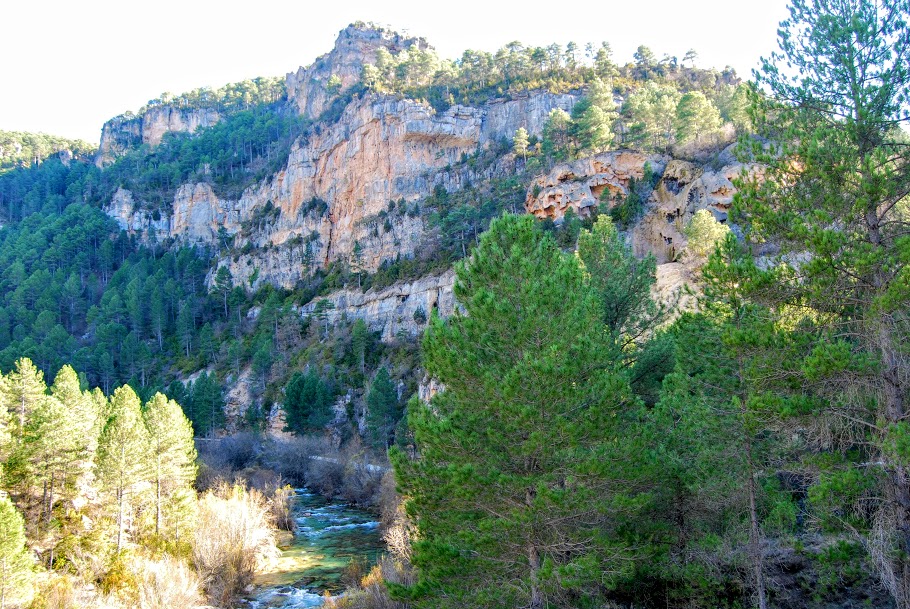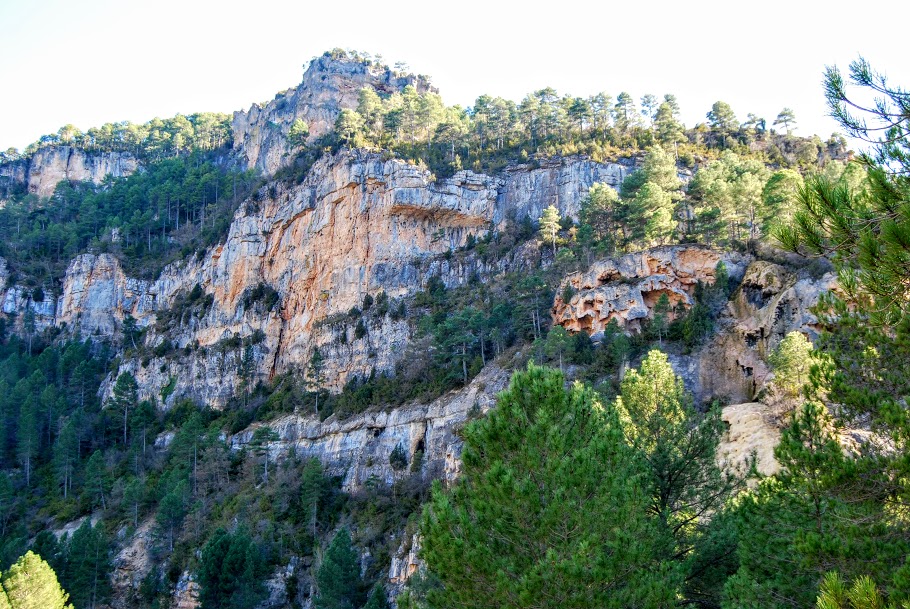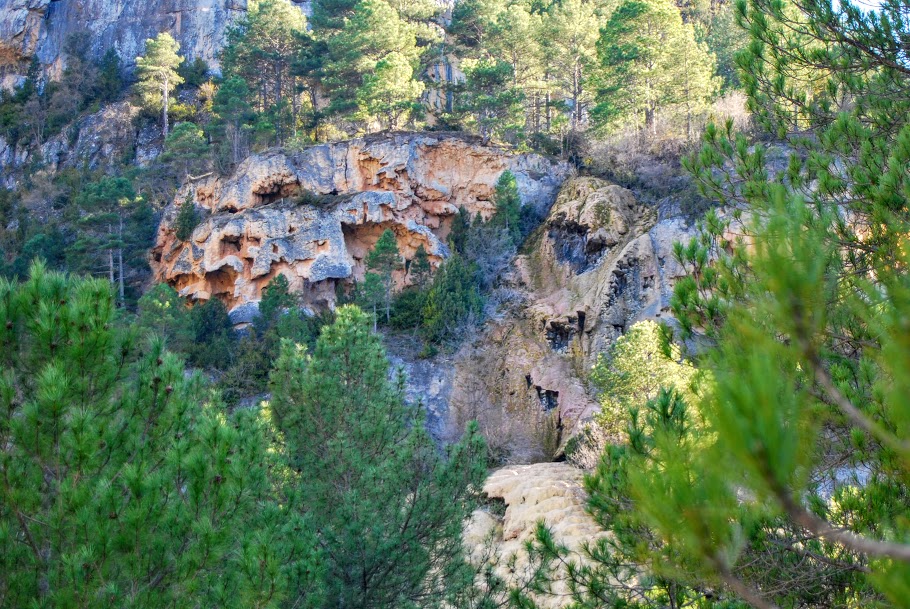The Escaleruela
Spectacular waterfall that is rarely seen
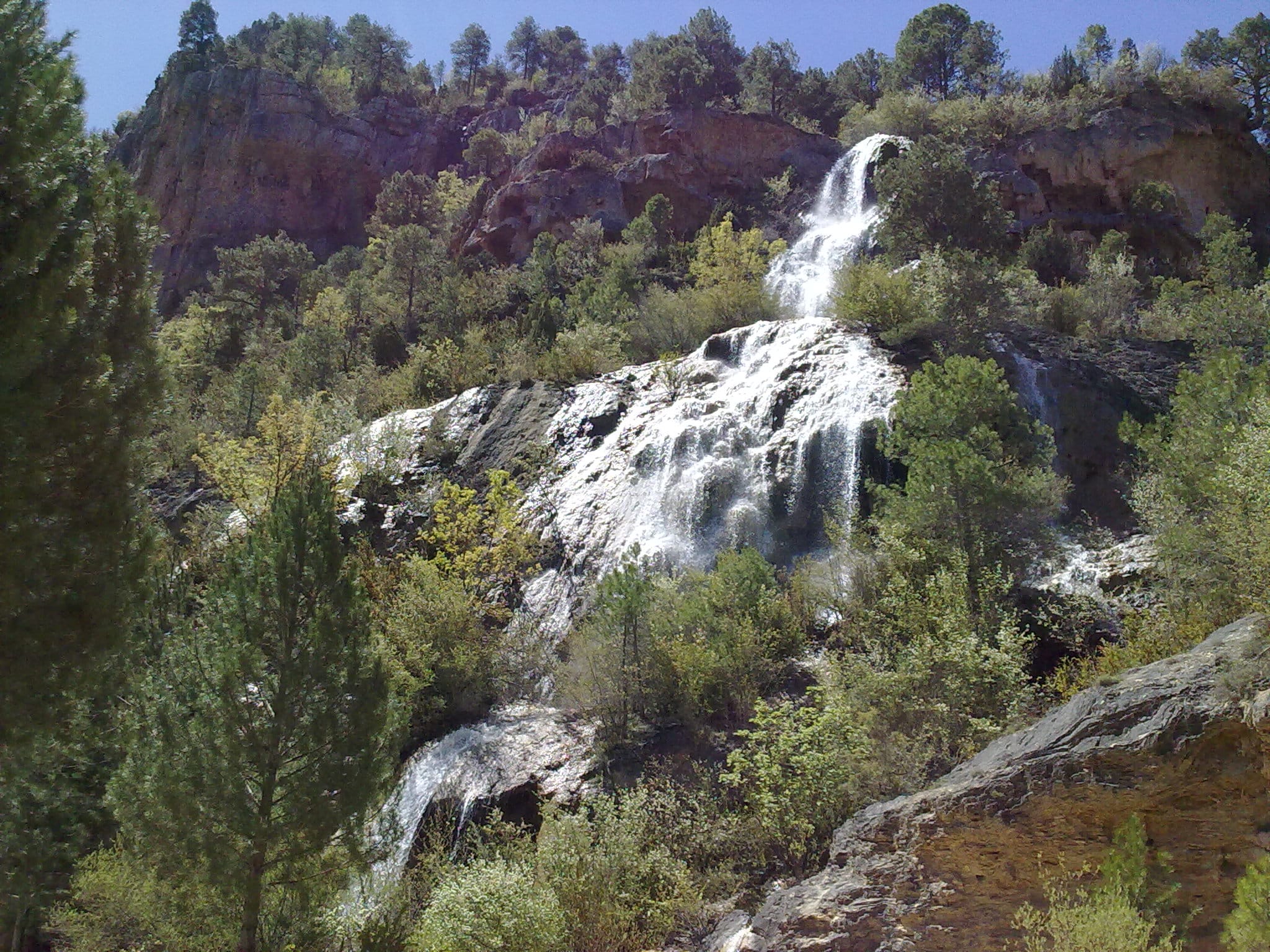
Dirección
The Escaleruela
GPS
40.7840249, -2.1541774
The Escaleruela
La Escaleruela is a spectacular tufa waterfall which owes its name to its stepped shape. It is a magnificent example of a tuffaceous construction in the Upper Tagus Natural Park, complementing the tuffs of the San Pedro´s Bridge from which they are only 1 km away.
It is a large accumulation of calcareous tuff, hence the name tufa building. The tuff is formed by the precipitation of calcium carbonate dissolved in water, which covers rocks and plant remains such as roots, leaves, branches and fruits, leaving a petrified mould of its shape. This tuffaceous edifice continues to be activeThis means that it grows a little more each year, but this growth is not continuous, but depends on the rainfall. During the wet season the carbonate precipitates and the water creates a beautiful waterfall, which can even freeze in winter. In the summer months, however, the waterfall is dry and inactive.
The water that rushes through it comes from a groundwater upwelling that forms a small turquoise blue lagoon at the bottom of the Black Cenote Gully. Although this small lagoon does not usually dry up, it is only in the winter months when it has enough water for part of it to reach the ravine and fall down the waterfall, allowing the formation of the spectacular tuff that we see.
Therefore, it is mainly the groundwater laden with calcium carbonate (partly coming from the molar where we can locate the Alcorón sinkhole), which carries this material, which when precipitated makes the tuffaceous edifice that the Escaleruela waterfall has created grow.
<< How to get there?
To visit this beautiful waterfall, we recommend spring, after a wet winter, as this is the time of year when there is most water. The easiest way is to take the track that runs parallel to the Tajo, at the height of the the tuffaceous building of St. Peter's BridgeJust at a narrowing in the road that crosses it, we will find this well-signposted track, along which we will walk until we see the waterfall on our right, accompanied by signs for the GR-113 that passes through here.
Remember that tuff is a very weak material and that, in particular, it is in the process of growth, so under no circumstances should we purposely wear out or deteriorate the travertine. If we go down the path of the GR-113 or the Georuta 4This leads us between fallen blocks of travertine to the top of the waterfall, where we visit the spring, please remember that this building is alive and we have to try to cause as little damage as possible, do not step off the path, do not tear off pieces of tuff or wear it out by engraving anything on it.

